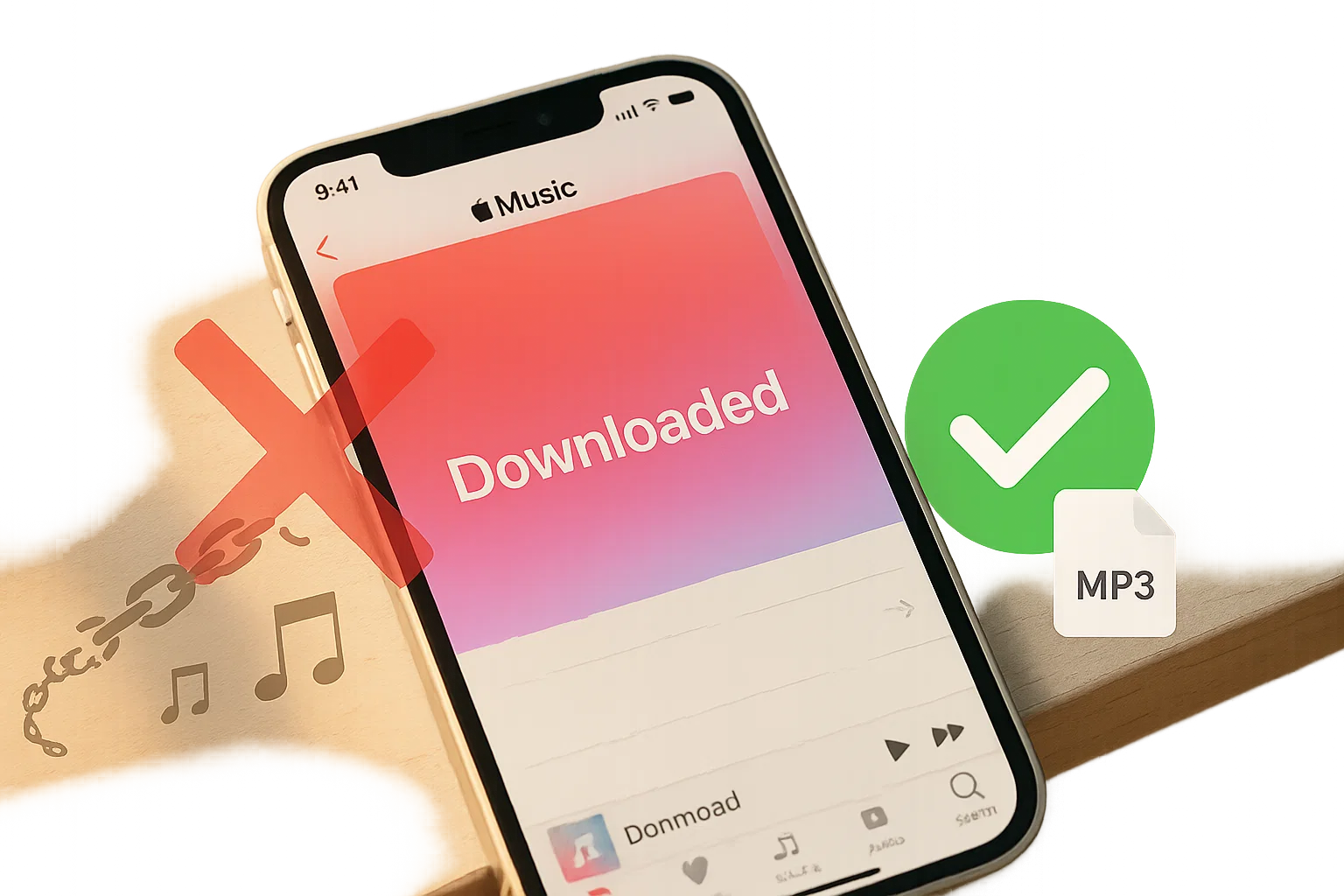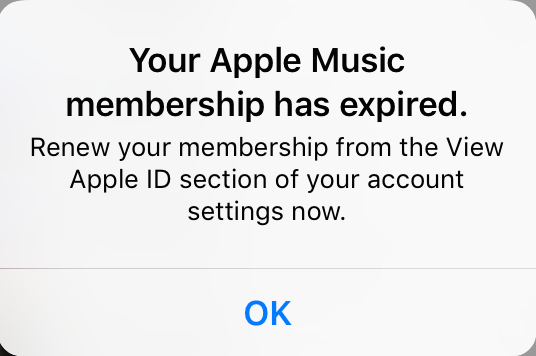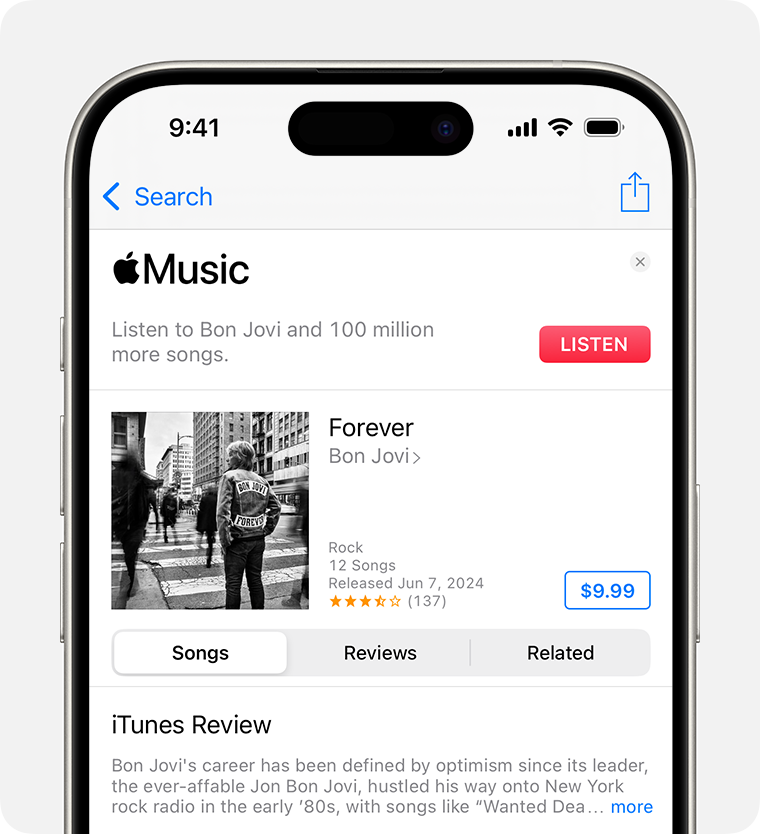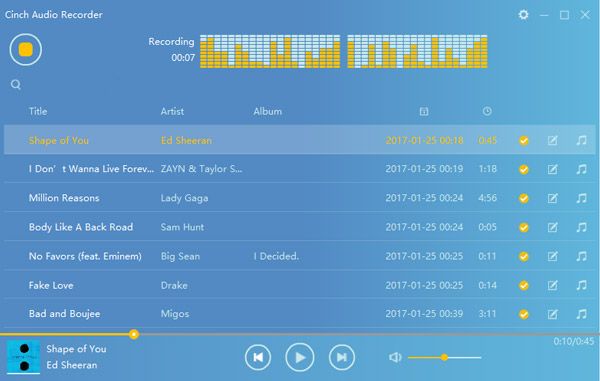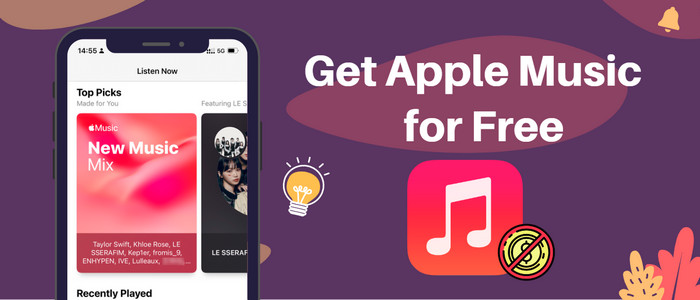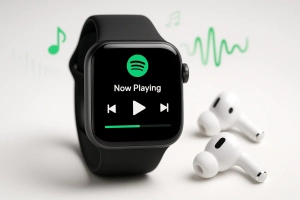Ever spent hours curating the perfect Apple Music playlist, only to realize it’ll vanish the second you cancel your subscription? Yeah, that was me last year.
I’d built this massive library—we’re talking 3,000 songs across every mood and genre. Then I forgot to update my payment info. One month later? Poof. All gone. Even the songs I’d “downloaded” were locked behind Apple’s digital gates.
Here’s what no one tells you upfront: When you subscribe to Apple Music, you’re basically renting access. Not owning. Not even close.
But here’s the thing—you don’t have to lose everything. After some digging (and a lot of trial and error), I found legit ways to keep my Apple Music collection forever. Not sketchy workarounds. Actual methods that work.
This guide walks you through everything: why Apple locks you out, what methods actually preserve your library, and how I personally converted my entire collection using a tool that costs less than three months of Apple Music.
Ready to take control of your music? Let’s get into it.
In This Article:
Understanding Why You Lose Apple Music After Cancellation
How Apple Music’s DRM Protection Works
Think of DRM (Digital Rights Management) as a digital padlock on every song. Even when you download for offline listening, you’re getting encrypted files tied to your active subscription—not actual ownership.
Apple uses FairPlay encryption—the same technology protecting iTunes movies and TV shows. Here’s how it works technically: Each downloaded track is wrapped in an AES-128 encrypted container. Your Apple ID generates unique decryption keys stored on Apple’s servers. When you hit play, the Music app pings Apple’s authentication servers, verifies your subscription status, retrieves the decryption key, and only then unlocks the audio stream.
No subscription = no decryption key = unplayable file. The actual audio data sits on your device, but it’s scrambled into gibberish without that server-side key.
What really frustrated me: Downloaded files show up in your library, taking up gigabytes of space, but they’re completely useless the second you cancel. It’s like owning a locked safe you can never open.
This applies to every single song in Apple Music’s 100 million track library. Lossless files, exclusives—all locked down.
What Actually Happens When Your Subscription Expires
Day 1 after my subscription expired: “This song is not currently available.” Wait, what? I downloaded it last week.
Day 7: Resubscribed out of panic. Everything returned instantly. But I was furious—spent $132 that year and owned nothing.
I later found a Reddit thread where someone described it perfectly: “It’s like renting furniture for years, then the company takes it all back but leaves the delivery boxes in your house as a reminder.” Thousands of upvotes. We’ve all been there.
Here’s what happens when your subscription ends:
- Streaming stops immediately – No access to Apple Music’s catalog
- Downloads become locked – Unplayable files waste storage space
- Playlists remain visible – You can see your library, but can’t play it
- Personal uploads stay – Only MP3s you uploaded yourself remain accessible
Lesson: Downloaded ≠ owned.
Official Methods to Keep Apple Music
Purchase Individual Songs from iTunes Store
Best for: Songs you absolutely must own forever
Buying from the iTunes Store gives you DRM-free files (iTunes Plus) that you genuinely own.
How it works: Find a song → three-dot menu → “Buy” → pay $1.29 per track.
I bought 15 wedding playlist essentials this way. Total: $20.
| ✅ Pros | ❌ Cons |
|---|---|
| True ownership—yours forever | Expensive: $1.29 per song adds up fast |
| DRM-free (iTunes Plus tracks) | Not every Apple Music song available for purchase |
| Works on any device | Limited to what Apple sells in iTunes Store |
| Can convert to MP3/other formats | Impossible for large libraries (1,000 songs = $1,290!) |
Real talk: If your Apple Music library has more than 20-30 favorite tracks, this method gets expensive real quick.
Subscribe Indefinitely
Best for: Heavy streamers who don’t mind ongoing costs
Keep paying = keep access. $10.99/month = $131.88/year.
My take: Convenient, but you own nothing. Family Plan ($16.99/month for 6 people) or Student Discount ($5.99/month) help, but it’s still rental.
Use iCloud Music Library for Backup
iCloud syncs your library across devices—but only while subscribed. Not a real backup solution. The moment your subscription ends, synced Apple Music content locks. Only personally uploaded MP3s stay accessible.
Keep Apple Music Forever with Cinch Audio Recorder
Why Cinch Audio Recorder is the Best Solution
After my subscription disaster, I tested seven different music converters. Most were clunky, slow, or butchered audio quality. Then I found Cinch Audio Recorder—and honestly, it solved every problem I’d run into.
Here’s what makes it different: Instead of paying $1.29 per song or $132 every year for a subscription, you pay $25.99 once. That’s it. And you get unlimited conversions.
What Cinch actually does:
It records Apple Music as it plays on your computer, automatically splits tracks, keeps perfect audio quality, and tags everything with artist names, album art, and metadata. You end up with standard MP3 (or FLAC/WAV) files that work on literally any device—iPhone, Android, car stereo, MP3 player, you name it.
Why I chose Cinch over competitors:
- Speed: Converts at 10X real-time. A 50-song playlist took me 8 minutes.
- Quality: Preserves lossless audio if that’s what you’re streaming
- Simplicity: Ridiculously easy interface—if you can use iTunes, you can use this
- Price: $25.99 vs. $40-50 for NoteBurner, TunesKit, or Sidify
- No DRM hacking: Works by recording audio output, so it’s undetectable by Apple
My verdict: If you’ve got more than 20 favorite Apple Music tracks you want to keep, Cinch pays for itself in two months compared to buying songs individually.
What other users say:
I’m not the only one who swears by this. One user on the Cinch forum converted their entire 10,000-song Apple Music library in a weekend: “Ran it overnight Friday and Saturday. Woke up Sunday to a complete MP3 archive. Worth every penny.” Another mentioned using it for Apple Music vs Spotify comparisons—converting playlists from both services to find which had better audio quality.
How to Download and Convert Apple Music with Cinch
I’m walking you through the exact process I used to convert my 3,000-song library. No fluff, just what actually works.
Step 1: Install Cinch Audio Recorder
Download Cinch from the official website (link below). Installation takes about 2 minutes—standard Windows/Mac setup, nothing fancy.
Important: Make sure you download directly from cinchsolution.com to avoid sketchy third-party sites offering “free” versions loaded with malware.
Step 2: Configure Output Settings
Before converting anything, click the settings gear and dial in your preferences:
- Output format: I use MP3 at 320kbps (max quality, universal compatibility)
- Output folder: Create a dedicated folder like “My Converted Music” so everything’s organized
- File naming: Cinch auto-names files as “Artist – Song Title” by default
Pro tip from my trial-and-error phase: If you’re an audiophile, go with FLAC for lossless quality. But MP3 320kbps is perfect for 99% of listeners and takes up way less storage.
Step 3: Add Apple Music Tracks
Click “Record” and play your Apple Music playlist. Cinch automatically detects new songs, splits tracks perfectly, and grabs metadata (artist, album, artwork).
I batch-converted a 200-song playlist while grabbing lunch. Came back to 200 perfectly tagged MP3s.
Step 4: Start Conversion
Cinch converts at 10X speed—a 4-minute song takes 24 seconds. I left it overnight and woke up to 1,000 songs ready.
Step 5: Access Your Permanent Music Files
Click “Library” → right-click any song → “Open File Location.”
The files are yours. Transfer to any device, upload to cloud, burn to CD, or make ringtones. No subscription checks, no DRM locks.
Special Feature: Ad Removal
If you use free Spotify too, Cinch has a “Filter” button that automatically removes audio ads from recordings.
Download Cinch Audio Recorder
Get Cinch Audio Recorder Pro:
Pricing: $25.99 one-time payment
Free trial: Convert your first 3 songs to test quality before buying
Trust me, convert three songs first. You’ll see the quality is identical to Apple Music’s stream, and you’ll know it’s worth the $26.
Alternative Third-Party Tools Worth Mentioning
Look, Cinch is my pick, but I tested others too. Here’s how they stack up if you want options:
| Tool | Speed | Quality | Price | Best For |
|---|---|---|---|---|
| Cinch Audio Recorder | 10X | Lossless | $25.99 | Best overall value |
| NoteBurner | 10X | Lossless | $39.95 | Mac users who want native Apple integration |
| TunesKit | 5X | Up to 320kbps | $39.95 | Batch playlist conversion |
| Sidify | 10X | Lossless | $39.95 | Multi-platform (Spotify, Amazon, Tidal) |
| AudiFab | 10X | Lossless | $39.95 | Clean interface, good for beginners |
Why I still recommend Cinch:
Same quality as the $40 options, faster than TunesKit, and $14 cheaper. Unless you need specific features from the others (like Sidify’s multi-platform support), Cinch is the no-brainer choice.
One tool I’d avoid: Those free online “Apple Music downloaders” you find on sketchy websites. Half of them are malware, the other half barely work and compress your audio to potato quality.
Smart Storage Strategies for Your Apple Music Library
Local Storage Best Practices
Best for: Immediate access
Organize by: Artist/Year - Album/Track Number - Song Title
Storage requirements:
- 1,000 songs (MP3 320kbps) = 3-4 GB
- 10,000 songs = 30-40 GB
Music management software:
MusicBee (Windows) or Foobar2000 (both free).
Want to organize your metadata? Learn how to add ID3 tags to MP3 files automatically.
Cloud Backup Options
Best for: Multi-device access
Free services:
- Mega: 20 GB
- Google Drive: 15 GB
- OneDrive: 5 GB
Don’t rely only on cloud. Always keep a local copy. If you’re also converting Spotify music to USB or other formats, the same backup strategy applies.
USB/External Drive Storage
Best for: Physical backup car playback
My SSD died unexpectedly—USB backup saved my entire library. Follow the 3-2-1 rule: 3 copies, 2 different mediums, 1 off-site.
Troubleshooting Common Issues
Conversion Quality Problems
Issue: Songs sound distorted
Fix: Turn OFF “Sound Check” (Settings → Playback), stream at highest quality (Lossless), and match Cinch output to source quality.
Missing Metadata/Artwork
Issue: Files show “Unknown Artist”
This drove me crazy until I figured it out. Turns out Cinch needs an active internet connection to fetch metadata from Apple Music’s servers.
Fixes:
- Stay connected to internet while converting (most common fix)
- Right-click in Cinch → “Edit ID3 Tags” to manually add info
- Use MP3Tag for batch editing
A user on the support forum shared a pro tip: “If metadata fails, just replay the song in Apple Music with internet on, then re-convert. Cinch grabs tags in real-time.” Worked perfectly for my missing album art.
Playback Compatibility Issues
Issue: Won’t play on certain devices
My AAC files failed in my car.
Solution: Convert to MP3. Works on every device. If you want to play streaming music offline in your car, MP3 is your safest bet.
Legal and Ethical Considerations
The gray area:
Converting Apple Music for personal use technically violates Apple’s Terms of Service, but personal format-shifting has historically been considered fair use.
My approach: Only convert what I listen to. Never share files. Support artists through concerts and merch. This guide is about owning music you already pay to access—not piracy.
Maximizing Your Apple Music Free Trial
Batch Download Your Favorite Playlists
Before trial expires: Create themed playlists → download offline → convert with Cinch → cancel before renewal.
Time investment: One afternoon. Result: 500 songs saved permanently.
I saw someone on Twitter brag about converting 2,000 songs during their 3-month free trial, then canceling before the first charge hit. Smart move. Apple still got to showcase their catalog, and the user walked away with a permanent library.
Explore and Save Apple Music Exclusives
Grab Spatial Audio tracks, Apple Music Radio sessions, and early releases you can’t find elsewhere. I discovered 50 new artists during my trial and converted their discographies. You can also record Apple Music using other methods if Cinch doesn’t fit your needs.
Conclusion
Losing your Apple Music library when your subscription ends doesn’t have to be your reality.
From my experience converting 3,000 songs, Cinch Audio Recorder ($25.99 one-time) paid for itself in three months vs continued subscription costs. My library survived a laptop crash, three phone upgrades, and multiple moves—all because I took one afternoon to convert everything and set up proper backups.
Your move: Start with Cinch’s free trial. Convert your top 3 must-keep songs. See the quality for yourself. If it works (it will), convert the rest of your library and own your music for good.
What’s the biggest song or playlist you can’t afford to lose? Drop it in the comments—I’m curious what music matters most to people.
Update based on reader feedback: Several readers emailed asking about converting Apple Music Classical. Yes, Cinch works with it too—same process, same quality. One classical music fan converted their entire 800-album Baroque collection without issues.
FAQ
Q: Can I keep my downloaded Apple Music songs after canceling my subscription?
No. Downloaded songs from Apple Music become unplayable the moment your subscription ends. The files remain on your device but are encrypted and locked behind DRM. To keep them playable, you must convert them to standard formats (like MP3) using tools like Cinch Audio Recorder before canceling.
Q: Is converting Apple Music to MP3 legal?
It exists in a legal gray area. Apple’s Terms of Service prohibit it, but personal format-shifting has historically been considered fair use in many jurisdictions (like copying a CD you own to your computer). Never share or distribute converted files—use them solely for personal listening. You’re essentially creating a backup of music you already pay to access.
Q: What’s the best format to save Apple Music in?
MP3 at 320kbps offers the best balance of quality and compatibility. It works on every device—iPhone, Android, car stereos, cheap MP3 players, smart speakers. For audiophiles who want lossless quality, FLAC preserves perfect audio but creates larger files and doesn’t work on all devices (especially Apple products). Avoid AAC or ALAC unless you’re staying exclusively in the Apple ecosystem. If you need WAV format, check out this guide on converting Spotify to WAV.
Q: How much does it actually cost to keep Apple Music forever?
Depends on your approach:
- Purchasing songs individually: $1.29 per track (only viable for small collections—$129 for 100 songs)
- Cinch Audio Recorder: $25.99 one-time payment (best value for 20 songs)
- Continued subscription: $10.99/month = $131.88/year (you never truly own anything)
Break-even calculation: If you have 20 favorite tracks, Cinch costs less than buying them individually. After three months, Cinch costs less than a continued subscription.
Q: Will Apple ban my account for using conversion tools?
Extremely unlikely. Apple doesn’t actively monitor or ban accounts for using music converters. These tools work by recording audio output (like holding a microphone up to speakers), not by hacking Apple’s servers or breaking encryption. That said, it technically violates their Terms of Service. Use at your own discretion, but I’ve never heard of anyone getting banned for personal conversions.
Q: What if I already canceled my subscription—can I get my music back?
If you resubscribe, your library and playlists will instantly reappear exactly as you left them. Apple keeps your library data stored even after cancellation. But if you want permanent access without resubscribing, you’ll need to convert your library during an active subscription (or during a free trial).
